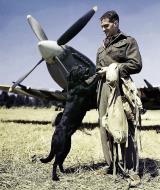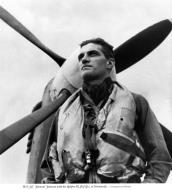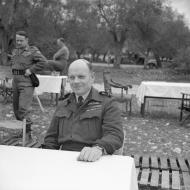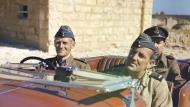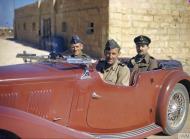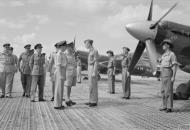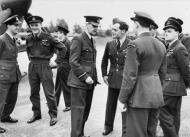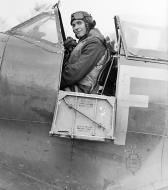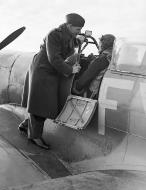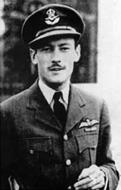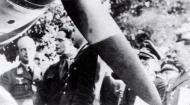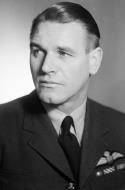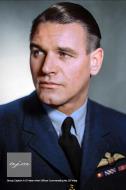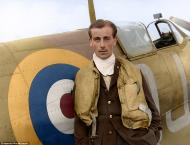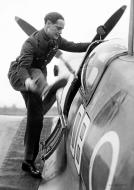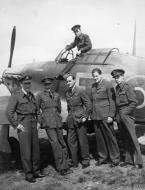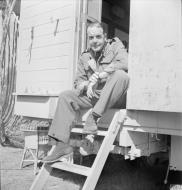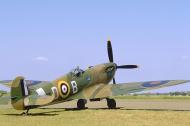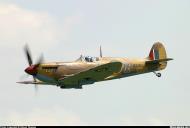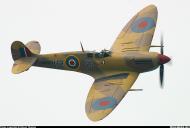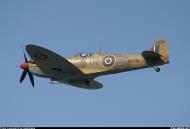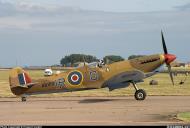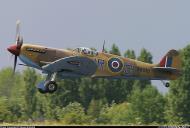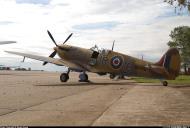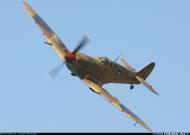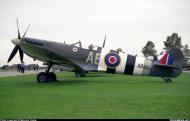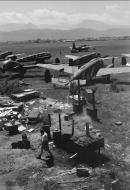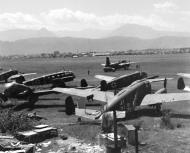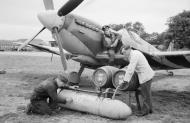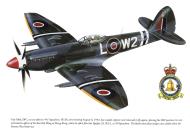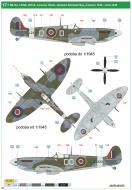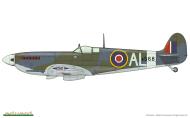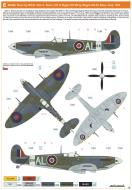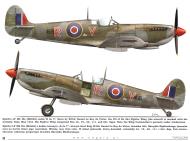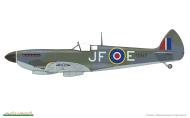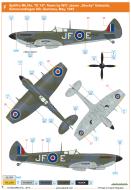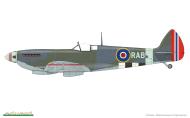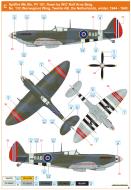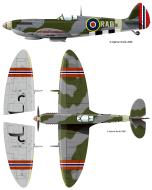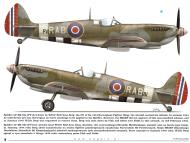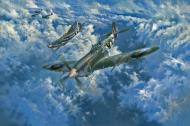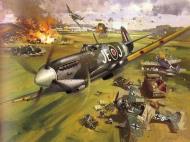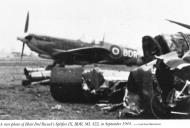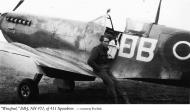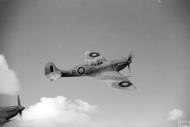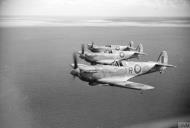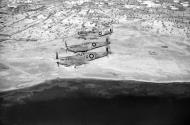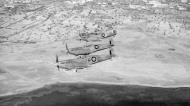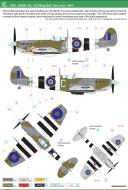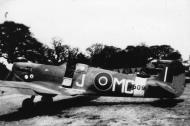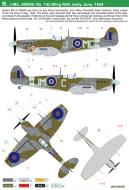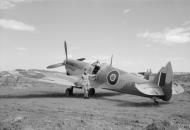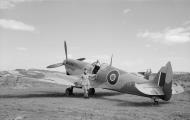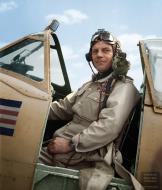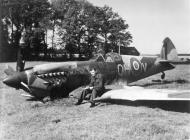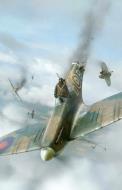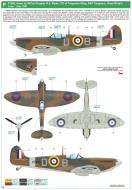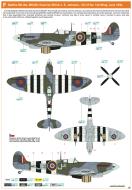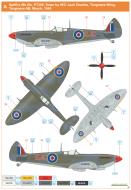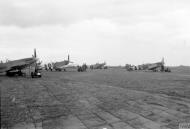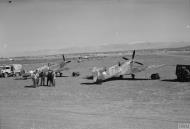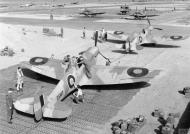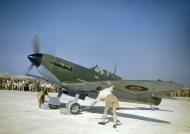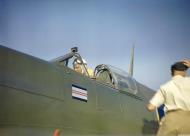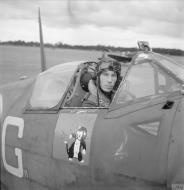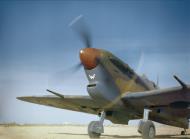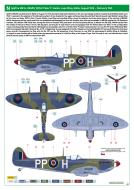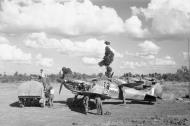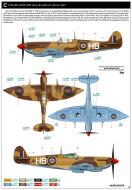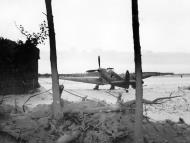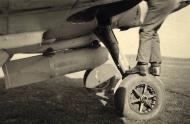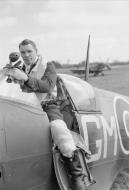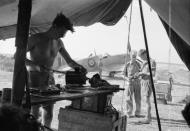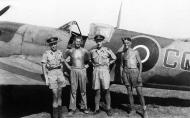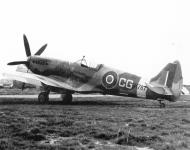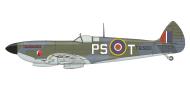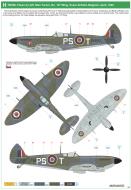Supermarine Spitfire photographs
Aircrew RAF 322 Wing Group Capt PH Hugo and Wing Commander R Berry IWM CNA282
Group Captain P H 'Dutch' Hugo (left), Commanding Officer of No. 322 Wing RAF, and Wing Commander R 'Raz' Berry, who took over leadership of the Wing in January 1943, conversing at Tingley, Algeria. Petrus Hendrik Hugo, a South African, joined the RAF on a short-service commission in February 1939. He flew with No. 615 Squadron RAF during the Battle of France and the Battle of Britain, and became a flight commander in September 1941. He was posted to command No. 41 Squadron RAF in November 1941, and then took over the leadership of the Tangmere Wing in April 1942 but was shot down (for a second time) and wounded shortly after. On recovery Hugo became Wing Leader at Hornchurch, but was soon posted to lead No. 322 Wing in the forthcoming invasion of North Africa (Operation TORCH). He took command of the Wing in November 1942 and added significantly to his victory score over Algeria and Tunisia. From March to June 1943, Hugo served on the staff at HQ North-West African Coastal Air Force, but returned to command 322 Wing in Malta, Sicily, France and Italy until it disbanded in November 1944. Having achieved 17 confirmed and 3 shared victories, he then joined the staff HQ Mediterranean Allied Air Forces and finished the war flying with the Central Fighter Establishment.
Imperial War Museum IWM CNA 282 https://www.iwm.org.uk/collections/item/object/205209189
Aircrew RAF 322 Wing Wing Commander ADJ Lovell IWM CNA3323
Wing Commander A D J Lovell (right) of Portrush, Northern Ireland, receives the American Distinguished Flying Cross from Brigadier General Thomas C D'Arcy, Commanding General of XII Tactical Air Command, 15th USAAF, during an awards ceremony at Headquarters, Mediterranean Allied Air Forces, Caserta, Italy. The award was made in recognition of Lovell's able and aggressive leadership of No. 322 Wing RAF, while operating as part of XII TAC over north-west Italy and the South of France between March and August 1944. Lovell achieved his first aerial victories as a fighter pilot with No. 41 Squadron RAF over Dunkirk and during the Battle of Britain. He briefly commanded No. 145 Squadron RAF and moved to the Middle East in October 1941, becoming an operations controller at HQ RAFME, before a further posting to Malta in June 1942 where he took command of No. 1435 Flight, later 1435 Squadron RAF. After an impressive series of victories over the island he was again returned to controller duties at the begining of 1943 but rejoined operations leading the Safi Wing until November 1943. In December he joined 322 Wing, leading them to Corsica in March 1944, and then became leader of 244 Wing RAF in Italy, during which time he received his American DFC. In December 1944 he was posted to No. 71 Operational Training Unit as Chief Instructor, returning to the United Kingdom at the end of the War in Europe with a total of 16 and six shared victories. He was killed in a flying accident at Old Sarum on 17 August 1945.
Imperial War Museum IWM CNA 3323 https://www.iwm.org.uk/collections/item/object/205210894
Aircrew RAF 324 Wing Group Capt WGG Duncan-Smith at Venafro Italy IWM CNA2823
Group Captain W G G Duncan-Smith, Officer Commanding No. 324 Wing RAF, briefs some of his pilots at Venafro, Italy, for a morning fighter sweep in support of Operation DIADEM.
Imperial War Museum IWM CNA2823 https://www.iwm.org.uk/collections/item/object/205209374
Aircrew RAF Ace JE Johnnie Johnson in his Spitfire MkIX RAF 144 (Canadian) Wing Bazenville Normandy 01
Aircrew RAF Ace Wg Cdr JE Johnnie Johnson DSO DFC with Labrador Sally at Bazenville Normandy July 1944 01
Aircrew RAF Air Vice Marshal Dickson near Venafro Italy 1943 IWM NA13987
Air Vice Marshal W P Dickson, Air Officer Commanding the Desert Air Force, sitting down to afternoon tea while attending a conference at the Tactical Headquarters of the 8th Army, near Venafro, Italy.
Imperial War Museum IWM NA 13987 https://www.iwm.org.uk/collections/item/object/205208070
Aircrew RAF at Kuala Lumpur selected to form part of occupation in Japan IWM CF1123
Spitfire FRXIV's at Kuala Lumpur, Lieutenant General J Northcott CB, MVO, Chief Officer Commanding British Commonwealth Occupation Forces in Japan, speaks to Flight Sergeant A D Denton, a pilot in one of two Spitfire squadrons selected to form part of the Allied forces of occupation in Japan. Behind General Northcott stands Air Vice Marshal C A Bouchier CB, CBE, DFC, Air Officer Commanding British Commonwealth Air Forces of Occupation in Japan.
Imperial War Museum IWM CF 1123 https://www.iwm.org.uk/collections/item/object/205207778
Aircrew RAF Battle of Britain Anniversary fly-past over London IWM CH16283
Air Chief Marshal Lord Dowding talking with Group Captain D R S Bader and other veteran fighter pilots before they took off from North Weald, Essex, for the Battle of Britain Anniversary fly-past over London. They are (left to right); Wing Commander J Ellis, Wing Commander T A Vigors, Wing Commander D Crowley-Milling, ACM Lord Dowding, Group Captain D R S Bader, Squadron Leader R Buch, Wing Commander B Drake (partially behind Buch), Wing Commander P M Brothers, and an unknown pilot (behind Brothers).
Imperial War Museum IWM CH 16283 https://www.iwm.org.uk/collections/item/object/205210755
Aircrew RAF Group Captain A G Malan CO RAF 20 Wing IWM CH2661
Group Captain A G Malan when Officer Commanding No. 20 Wing
Imperial War Museum IWM CH 2661 https://www.iwm.org.uk/collections/item/object/205210528
Aircrew RAF Wings during the Dieppe Raid at Tangmere IWM HU88314
Group Captain Charles Appleton (centre), Station Commander at Tangmere, flanked by some of the wing leaders and squadron commanders who flew on the Dieppe Raid. On the left, Wing Commander 'Johnnie' Walker (Tangmere Wing) and 'Pat' Gibbs (Ibsley Wing). On the right, Squadron Leaders 'Bertie' Wootten (No 118 Squadron) amd 'Bobby' Yule (No 66 Squadron). Seated on the Hurricane behind is 'Dan' Du Vivier, the Belgian CO of No 43 Squadron.
Imperial War Museum IWM HU 88314 https://www.iwm.org.uk/collections/item/object/205094158
Siebel Si 204 captured by RAF 232 Wing at Klagenfurt Austria IWM CNA3636
Cooks of No. 324 Wing RAF, Desert Air Force, prepare the midday meal in field ovens set up by the airfield at Klagenfurt, Austria. Parked in the foreground are a number of Siebel Si 204 communications aircraft left by the Germans and, beyond them, a Douglas Boston of No. 232 Wing RAF.
Imperial War Museum IWM CNA 3123 https://www.iwm.org.uk/collections/item/object/205209407
Spitfire LFVb RAF 244 Wing IRG AB502 over the Tunisian coast IWM CNA816
Spitfire LF Mark VB, AB502 IR-G, the personal aircraft of Wing Commander I R "Widge" Gleed, No. 244 Wing Leader based at Bu Grara, Tunisia, in flight off Djerba Island. The aircraft is fitted with an Aboukir air filter and has clipped wings in order to assist low-level performance
Imperial War Museum IWM CNA 816 https://www.iwm.org.uk/collections/item/object/205209220
Spitfire LFVb RAF 601Sqn IRG AB502 UFV ER220 UFF EP481 off the Tunisian coast IWM CNA818
Three Spitfire LF Mark VBs of No. 244 Wing RAF based at Bu Grara, flying in close starboard echelon formation off the Tunisian coast after escorting light bombers on a sortie to Mareth. AB502 IR-G, in the foreground, is the personal aircraft of the Wing Leader, Wing Commander I R "Widge" Gleed, which he flew when he was shot down and killed over Cap Bon on 16 April 1943, while the two accompanying aircraft are ER220 UF-V and EP481 UF-F of No. 601 Squadron RAF. All three are fitted with Aboukir air filters and have clipped wings in order to assist low-level performance.
Imperial War Museum IWM CNA 818 https://www.iwm.org.uk/collections/item/object/205209221
Spitfire LFVb RAF 601Sqn IRG AB502 UFV ER220 UFF EP481 off the Tunisian coast IWM CNA821
Three Spitfire LF Mark VBs of No. 244 Wing RAF based at Bu Grara, flying in close starboard echelon formation off the Tunisian coast after escorting light bombers on a sortie to Mareth. AB502 IR-G, in the foreground, is the personal aircraft of the Wing Leader, Wing Commander I R "Widge" Gleed, which he flew when he was shot down and killed over Cap Bon on 16 April 1943, while the two accompanying aircraft are ER220 UF-V and EP481 UF-F of No. 601 Squadron RAF. All three are fitted with Aboukir air filters and have clipped wings in order to assist low-level performance.
Imperial War Museum IWM CNA 821 https://www.iwm.org.uk/collections/item/object/205209222
Spitfire LFVIII RAF WFD JF814 Air Vice Marshal WF Dickson northern Italy IWM CNA3175
Air Vice Marshal W F Dickson, Air Officer Commanding the Desert Air Force, stands by his personal Supermarine Spitfire LF Mark VIII, JF814 WFD at a landing ground in northern Italy.
Imperial War Museum IWM CNA 3175 https://www.iwm.org.uk/collections/item/object/205209416
Spitfire MkIXs RAF 144 Wing at B3 Sainte Croix-sur-Mer Normandy 1944 IWM CL87
Supermarine Spitfires of No. 144 Wing, the first RAF formation to fly into France, at readiness on the advanced landing ground at B3/Sainte Croix-sur-Mer, Normandy.
Imperial War Museum IWM CL 87 https://www.iwm.org.uk/collections/item/object/205210530
Spitfire MkIXs RAF 281 Wing at Prkos Yugoslavia IWM CNA3509
Supermarine Spitfire Mark IXs of No. 281 Wing RAF are prepared for a sortie at Prkos, Yugoslavia, as the pilots confer before take off.
Imperial War Museum IWM CNA 3509 https://www.iwm.org.uk/collections/item/object/205209459
Spitfire MkVb RAF 322 Wing C ES187 and T ES191 at Tingley Algeria IWM CNA278
Supermarine Spitfire Mark Vs of No. 322 Wing RAF, parked in their dispersals at Tingley, Algeria. In the foreground Mark VBs ES187 'C' and ES191 'T' of No. 154 Squadron RAF are being brought to readiness for a patrol. Note the extensive use of pierced steel planking (PSP) to surface the dispersals and taxiways.
Imperial War Museum IWM CNA 278 https://www.iwm.org.uk/collections/item/object/205209189
Spitfire MkVb RAF Ibsley Wing RG with IR Gleed at Ibsley Hampshire IWM CH5908
Wing Commander I R "Widge" Gleed sitting in the cockpit of his Supermarine Spitfire Mark VB, AA742 'R G', at Ibsley, Hampshire, when leading the Ibsley Wing. Note Gleed's personal emblem, depicting "Figaro" the cat swatting a swastika, beneath the cockpit.
Imperial War Museum IWM CH 5908 https://www.iwm.org.uk/collections/item/object/205210199
Spitfire MkVIII RAF 906 Wing HGG JG253 at Tabingaung 1944 IWM CF269
Supermarine Spitfire LF Mark VIII, JG253, the personal aircraft of Group Captain H G Goddard, Commanding Officer of No. 906 Wing RAF, being serviced and refuelled at Tabingaung, Burma. Behind this aircraft are parked other Spitfire LF Mark VIIIs, belonging to No. 155 Squadron RAF, detached from Tulihal to assist in operations in support of the 14th Army.
Imperial War Museum IWM CF 269 https://www.iwm.org.uk/collections/item/object/205207721
Spitfire RAF 145 Wing Group Capt AG Sailor Malan at Merston IWM CH12859
Group Captain A G 'Sailor' Malan, Officer Commanding No. 145 Wing based at Merston, climbing in to the cockpit of his Supermarine Spitfire before taking off from Appledram, Sussex.
Imperial War Museum IWM CH 12859 https://www.iwm.org.uk/collections/item/object/205210538
Spitfire RAF 244 Wing at Lentini Sicily IWM CNA1330
Fitters at work on a bench propped on ammunition boxed in a canvas shelter on the edge of the airfield at Lentini West, Sicily. In the background a Supermarine Spitfire of No. 244 Wing RAF is being painted with its identification letters.
Imperial War Museum IWM CNA 1330 https://www.iwm.org.uk/collections/item/object/205212483
RAF Tangmere Wing
Spitfire MkVb Tangmere Wing DB flown by Wing Commander Douglas Bader while Officer Commanding Tangmere Wing, March 1941.
Asisbiz: the serial EE606 is for Vc WA2822 West M46 6MU 14-9-42 215MU 23-9-42 Port Wyndham 9-10-42 Australia 21-11-42 RAAF as A58-106 auth for writeoff 5-46 SOC 11-48 restored as G-MKVC written off 1.7.89
Spitfire MkI RAF Tangmere Wing P7966 D-B 'Manxman' flown by Wing Commander Douglas Bader while Officer Commanding Tangmere Wing, March 1941.
Pilots RAF Douglas Bader with JG26 Adolf Galland Aug 9 1941 01-02
Photo's 01-02: The RAF's policy of wearing down the Luftwaffe and forcing the withdrawal of units from the Russian Front was not achieved and Fighter Command suffered high losses. One notable British loss occurred during Circus 68 on 9 August 1941 when the well-known Tangmere Wing Leader, W/Cdr. Douglas Bader, who had lost his legs in a pre-war flying accident, was forced to abandon his Spitfire over the French coast after colliding with a Bf-109, possibly that flown by Uffz. Albert Schlager of 3./JG26. After being captured, Bader was entertained by Adolf Galland and members of JG26 at Audembert (Photo 01) and allowed to inspect one of the unit's Bf-109Fs at close quarters (Photo 02).Spitfire MkVa Tangmere Wing DB Douglas Bader W3185 Tangmere 1941
Pilots RAF Douglas Bader with JG26 Adolf Galland Aug 9 1941 01-02
Photo's 01-02: The RAF's policy of wearing down the Luftwaffe and forcing the withdrawal of units from the Russian Front was not achieved and Fighter Command suffered high losses. One notable British loss occurred during Circus 68 on 9 August 1941 when the well-known Tangmere Wing Leader, W/Cdr. Douglas Bader, who had lost his legs in a pre-war flying accident, was forced to abandon his Spitfire over the French coast after colliding with a Bf-109, possibly that flown by Uffz. Albert Schlager of 3./JG26. After being captured, Bader was entertained by Adolf Galland and members of JG26 at Audembert (Photo 01) and allowed to inspect one of the unit's Bf-109Fs at close quarters (Photo 02).
MJ931 LFIX CBAF M66 33MU 4-1-44 312S 31-1-44 AST 25-5-44 302S 9-11-44 AST 8-12-44 331S 10-5-45 RNorAF 21-9-45 as 'A-AI'
Tangmere, England, United Kingdom Map
131 Coltishall Wing
Spitfire LFIX RAF 131 Wing SZ-G Aleksander Gabszewicz NH214 England 1944
NH214 LFIX CBAF M66 6MU 6-5-44 82MU 19-5-44 GAL 12-8-44 302S 19-10-44 ASTH 1-3-45 39MU 5-7-45 sold Turkey 16-10-47
Spitfire LFIX RAF 131 Polish Wing SZ-G Gabszewicz NH342 England 1944
NH342 LFIX CBAF M66 6MU 1-5-44 AST 18-5-44 317S 15-6-44 302S 9-11-44 317S 11-1-45 CB ops 28-2-45 Miles Aircraft 9MU 15-6-45 165S 20-6-46 165S 27-6-46 66S 2-9-46 sold scrap R.J.Coley 3-2-50
RAF 142 Wing
Spitfire LFVc RAF 142 Wing J-MC JM 'Johnny' Checketts AB509 1944
AB509 Vc 2542 M45 FF 29-1-42 24MU 31-1-42 66S 15-3-42 AST 16-9-42 131S 31-12-42 412S 23-1-43 310S 3-3-43 144AF 3-3-44 Scottish Aviation 20-3-44 402S 22-5-44 53OTU 29-9-44 SOC 31-5-45
RAF 145 Wing
Supermarine Spitfire MkIXc RAF 145 Wing 2nd TAF AL Commander Alan Deere EN568 England May 1944
RAF 239 Wing
Supermarine Spitfire LFVIII RAF 239 Wing FB Robert Boyd MD371 India 1944.
MD371 LFVIII EA M66 9MU 5-2-44 222MU 21-2-44 Streafkerk 26-3-44 India 11-5-44 228 Grp CF SOC 28-8-47
Calcutta, West Bengal, India Map
RAF 244 Wing
Spitfire LFVb RAF 244 Wing IR-G Wing Commander Ian Gleed AB502 Egypt 1943
AB502 VbT 2541 M45 FF 28-1-42 6MU 13-2-42 Crosby Co 20-2-42 Denmark 11-3-42 Takoradi 9-5-42 Middle East 5-6-42 145S 'ZX-B' Aboukir filter fitt [Destroyed in air raid LG 154 22-8-42] 224Wing shot down by Bf109 Tunisia 16-4-43 A/C Gleed killed
Photos:Three Royal Air Force Supermarine Spitfire Vb on a patrol over Djerba Island, off Gabes, on their way to the Mareth Line area in early 1943. The planes "UF-V" and "UF-F" belonged to 601 Squadron. The plane "IR-G" (s/n AB502) in the foreground was the personal plane of Ian Richard Gleed, DFC, Wing Commander of No. 244 Wing. On 16 April 1943 Gleed was killed in a fighter sweep in the Cap Bon area. He was shot down in his Spitfire by German Messerschmitt Bf 109Gs from JG 77.
Spitfire LFVb RAF 244 Wing IR-G Wing Commander Ian Gleed AB910 Egypt 1943
AB910 Vb CBAF.1060 CBAF M45 MU 16-8-41 ? 92S 8-42 Middle East 1-9-42 VASM 7-6-43 fuel syst mods wing stiff 416S 1-7-43 53OTU took off Hibaldstow with WAAF Margaret Horton on tail 4-4-45 sold A/C Wheeler 14-7-47 M45M install G-AISU BoB Flight 'QJ-J' struck Hendy Heck at Wolverhampton 17-10-47 extant BBMF
Photos:Three Royal Air Force Supermarine Spitfire Vb on a patrol over Djerba Island, off Gabes, on their way to the Mareth Line area in early 1943. The planes "UF-V" and "UF-F" belonged to 601 Squadron. The plane "IR-G" (s/n AB502) in the foreground was the personal plane of Ian Richard Gleed, DFC, Wing Commander of No. 244 Wing. On 16 April 1943 Gleed was killed in a fighter sweep in the Cap Bon area. He was shot down in his Spitfire by German Messerschmitt Bf 109Gs from JG 77.
RAF 322 Wing
Supermarine Spitfire EN MkIXc RAF 322Wing CG Colin Falkland Gray MA408 Sicily 1943. On the 12th August 1943 Colin Falkland Gray who was escorting B-26 Marauders ran short of fuel and had to bail out North of Malta. He was rescued by HSL
Spitfire MA408 FF 11-2-43 R-RH Cv IX 9MU 13-2-43 47MU 25-2-43 Wanderer 12-3-43 Gibraltar 24-3-43 Malta 1-7-43 Sicily 1-8-43 Engine cut abandoned N of Malta 12-8-43 SOC 13-8-43
RAF 324 Wing
Spitfire MkVIII RAF 324 Wing BK Brian Kingcombe Termini 1943
Spitfire MkIXc RAF 324 Wing BK Brian Kingcombe TB539 Zeltweg Austria 1945
TB539 HFIX CBAF M70 39MU 1-2-45 Melton Mobray 23-2-45 MedAAF 5-3-45 137MU Cv LFIX M66 29-1-48 RHAF 27-5-48
Zeltweg, Austria Map
RAF Culmhead Wing
Spitfire MkVII RAF Culmhead Wing PB Pete Brothers MD188 England 1944
MD188 VII EA M64 33MU 21-5-44 3501SU 14-6-44 131S 25-6-44 SF Culmhead 25-6-44 RAF Colerne 9-10-44 high alt trials SOC 9-12-48
RAF Culmhead England Map
RAF Detling Wing
Supermarine Spitfire MkXIVc RAF Detling Wing CG Wing Commander Colin Grey RM787 Lympne, October 1944
RAF Lympne, England Map
RAF Luqa Wing
Spitfire MkVc Trop RAF Luqa Wing PP-H Wg.Cd Peter Hanks BR498 Luqa Malta 1942
Triq Hal Far, Luqa, Malta Map
RAF Portreath Wing
Spitfire MkVb RAF Portreath Wing MB Minden Blake W3561 Portneath 1942
W3561 Vb 1832 HPA M45 FF 2-7-41 33MU 3-7-41 313S 26-10-41 130S 17-12-41 Missing presumed shot down by Fw190s off Dieppe 19-8-42 FH118.20
Portreath, Cornwall Map
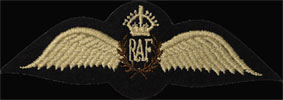







Biggin Hill, England, United Kingdom Map
Duxford, England, United Kingdom Map
Magazine References: +
- Airfix Magazines (English) - http://www.airfix.com/
- Avions (French) - http://www.aerostories.org/~aerobiblio/rubrique10.html
- EDUARD - https://www.eduard.com/
- EDUARD - Are in my opinion are what modelers are looking for loads of pictures and diagrams and have become a leading historical information source. *****
- FlyPast (English) - http://www.flypast.com/
- Flugzeug Publikations GmbH (German) - http://vdmedien.com/flugzeug-publikations-gmbh-hersteller_verlag-vdm-heinz-nickel-33.html
- Flugzeug Classic (German) - http://www.flugzeugclassic.de/
- Klassiker (German) - http://shop.flugrevue.de/abo/klassiker-der-luftfahrt
- Luftwaffe IM Focus (German) - https://www.luftfahrtverlag-start.de/
- Embleme der Luftwaffe Band-1 (German) - https://www.luftfahrtverlag-start.de/
- Le Fana de L'Aviation (French) - http://boutique.editions-lariviere.fr/site/abonnement-le-fana-de-l-aviation-626-4-6.html
- Le Fana de L'Aviation (French) - http://www.pdfmagazines.org/tags/Le+Fana+De+L+Aviation/
- Osprey (English) - http://www.ospreypublishing.com/
- model airplane international magazine - https://adhpublishing.com/shop/store/magazine-backissues/model-airplane-international-backissues/
- Revi Magazines (Czech) - http://www.revi.cz/
Web References: +
- History of RAF Organisation: http://www.rafweb.org
- History of RAAF: http://www.airpages.ru/eng/ot/raaf_01.shtml
- Wikipedia, the free encyclopedia: http://en.wikipedia.org/
 Editor for Asisbiz: Matthew Laird Acred
Editor for Asisbiz: Matthew Laird Acred
If you love our website please subscribe to our YouTube video channel
Please donate so we can make this site even better !!

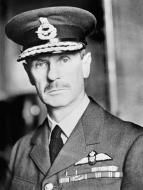
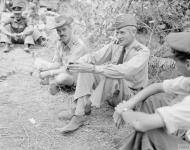
-John-Lane-01.jpg)

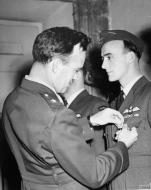
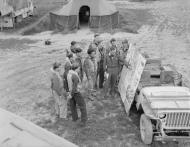
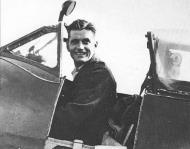
-Wing-Bazenville-Normandy-01.jpg)
